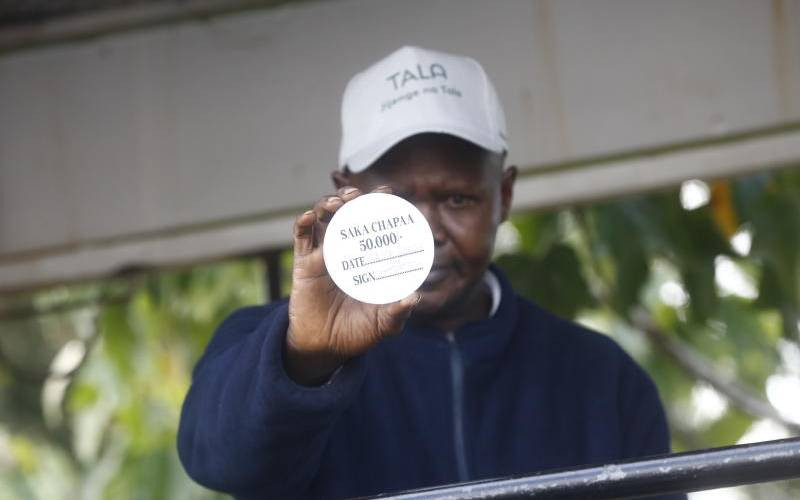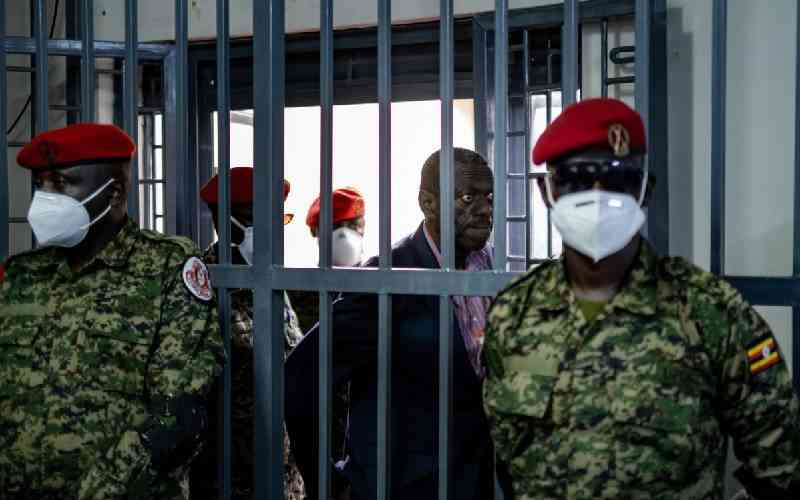According to Director of Meteorological Services, Dr Joseph Mukabana, the expected depressed seasonal rains are associated with the presence of an evolving La NiÒa. |
Last year’s prolonged drought left livestock in parts of the country starving to death.[PHOTO: FILE] |
next year
The current weak to moderate La NiÒa conditions are forecasted to strengthen with time and more so towards the end of the year and persist to the beginning of next year.
"This La NiÒa is currently classified as weak to moderate and is expected to strengthen with time. The distribution of the rainfall in time and space is, therefore, expected to be generally poor over most places," Mukabana says in a weather outlook report.
Also sharing the outlook of depressed rainfall expected over most agricultural areas of the country and in the Horn of Africa region is the United States Agency for International Development’s Famine Early Warning System Network.
Oxfam, a global aid agency has also cautioned in a new report aimed at tackling world hunger within the next five years, that East African countries would face more devastating food crises in future unless the regional governments take appropriate action now.
Acting Regional Director Leo Roozendaal said the improved situation this year was more down to good luck than good judgment.
"Another bad rainy season or failed harvest could see the region plunged back into crisis. Governments must do much more to address the underlying causes of hunger in the region, such as decades of under-investment,’ the Oxfam official warned.
According to the report, dubbed, ‘Halving World Hunger: Still Possible’, the rest of East Africa, including Ethiopia, Kenya, Uganda and Tanzania are at a greater risk of a new round of famine this year.
Mukabana cautioned that since it is also expected that the rainfall would be poorly distributed with prolonged dry spells, this would highly interfere with agricultural activities in most of the areas.
Stay informed. Subscribe to our newsletter
He advised farmers to liaise with the Ministry of Agriculture to make best use of the rains by planting appropriate crops.
In western Kenya, where near-normal rainfall is expected, farmers should also work closely with the ministry and take advantage of the expected good rainfall performance to maximize on the crop yield.
close cooperation
He said foliage and pasture conditions in the pastoral areas of north Eastern Kenya are expected to deteriorate as a result of expected poor rainfall performance. Mukabana says the Ministry of Livestock Development, should work closely with pastoralists to monitor the situation to avoid loss of animals.
The organisation, whose aim is to strengthen the abilities of African countries and regional organisations to manage risk of food insecurity through the provision of timely and analytical early warning and vulnerability information says the incidence would be double-faced.
It adds that La NiÒa, which is expected to result in belowaverage 2010 short rains in the north eastern pastoral and South eastern lowlands, could reverse the ongoing recovery in these areas, with a decline to high levels of food insecurity beginning in early next year.In contrast, the event is expected to result in above average short rains in the western sector of the country, including the north-western pastoral areas, Rift Valley, Western and Nyanza provinces, resulting in major consolidation in food security in these areas.
However, speaking at the just concluded Rift Valley 8th Agribusiness Fair, at the Rift Valley Institute of Science and Technology farm, where he was the chief guest Agriculture Secretary Dr. Wilson Songa, downplayed the likely effects of La Nina.
Songa added, Kenyans should not panic, as farmers expected to harvest 36 million bags of maize, several bags of beans, cowpeas and wheat, during the current season.
He cautioned farmers against relying on middlemen and brokers in marketing their crops.
Songa says the Government in consultations with stakeholders, has developed strategies to help in adaptation and mitigation of the effects of climate change.
He identified some of the interventions as application of agricultural technologies to increase food production while simultaneously limiting or reducing Green House Gas emissions.
Others are proper management of agricultural waste that includes using waste to produce biogas, which consequently also reduces the direct release of methane emissions into the atmosphere and improved crops production practices, for example, mulching instead of repeated tilling to control weeds and practising conservation agriculture.
 The Standard Group Plc is a
multi-media organization with investments in media platforms spanning newspaper
print operations, television, radio broadcasting, digital and online services. The
Standard Group is recognized as a leading multi-media house in Kenya with a key
influence in matters of national and international interest.
The Standard Group Plc is a
multi-media organization with investments in media platforms spanning newspaper
print operations, television, radio broadcasting, digital and online services. The
Standard Group is recognized as a leading multi-media house in Kenya with a key
influence in matters of national and international interest.
 The Standard Group Plc is a
multi-media organization with investments in media platforms spanning newspaper
print operations, television, radio broadcasting, digital and online services. The
Standard Group is recognized as a leading multi-media house in Kenya with a key
influence in matters of national and international interest.
The Standard Group Plc is a
multi-media organization with investments in media platforms spanning newspaper
print operations, television, radio broadcasting, digital and online services. The
Standard Group is recognized as a leading multi-media house in Kenya with a key
influence in matters of national and international interest.






